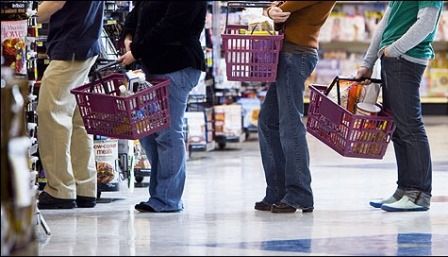
Consumers face empty shelves and long queues in South Africa
South Africans are seeing the price of household goods skyrocket, larger queues and a lack of certain stock in stores across the country, says PwC.
The financial services firm, in its latest Economic Outlook, said that despite disruptions to local and global supply chains becoming the new normal, they continue to hamper consumers with rising prices for everyday goods, among other things.
South African respondents to the group’s latest Global Consumer Insights Survey Pulse (GCIS) found that supply chain disruptions had significantly affected the price of household goods, increased the length of queues in stores and led to some items being out of stock.
Regarding the insights methodology, the GCIS represents the consumer class: 73% of local respondents have some form of employment and 84% are between the ages of 18 and 44, said PwC.
According to the insights report, the following issues were experienced the most while shopping in-store:
Shopping has already become a nightmare for many consumers, with price checking and discount hunting taking top priority.
The most recent Nielsen Global Outlook report found that consumers are taking up discounts at a record rate, chasing promotions, buying in bulk and taking advantage of loyalty schemes – all to reduce the final price tag of their shopping spree.
Food inflation, most notably, has reached sky-highs. The latest Household Affordability Index by the Pietermaritzburg Economic Justice & Dignity group (PMBEJD) showed that the average cost of the household food basket, which includes a selection of essential food goods, is now R4,966.20, upwards of R516.12 since the last year.
Supply chain disruptions have also taken their toll on the country’s overall economic outlook, said PwC. Since late last year, supply chain disruptions have crept up in severity.
Data from the South African Reserve Bank (SARB) shows that by late last year, pressures on supply chains were not much better than at the peak seen in the 2021 pandemic.
The bank’s composite supply chain pressure index came in at 102.9 in November late last year compared to a long-term average between 2006 and 2022 of 100.9.
This 2023, the S&P’s purchasing managers index for February noted that supply chains in the private sector were disrupted by reduced vendor capacity due to load shedding as well as reports of import delays from China.
“As a result, overall delivery times to local firms lengthened significantly, and to a level close to that seen in December when stage 6 load-shedding was also very prevalent,” said PwC.
Turbulent supply chains are expected to remain volatile for some time, PwC said.
The group added that methods used to try and fix issues or shocks to the system are becoming increasingly out of date and less effective.
News Category
- International retailers
- On the move
- Awards and achievements
- Legislation
- Wine and liquor
- Africa
- Going green
- Supplier news
- Research tools
- Retailer trading results
- Supply chain
- Innovation and technology
- Economic factors
- Crime and security
- Store Openings
- Marketing and Promotions
- Social Responsibility
- Brand Press Office
Related Articles

South Africa's Food Inflation: A turnaround in ...

Loyalty Programmes are helping consumers make i...

Good news for braai lovers in South Africa

Consumer giants risk pricing themselves out of ...


